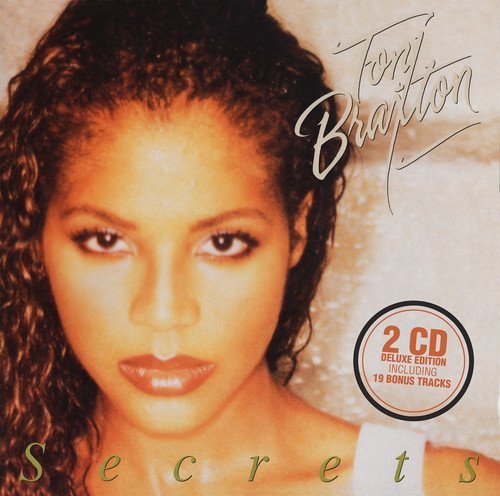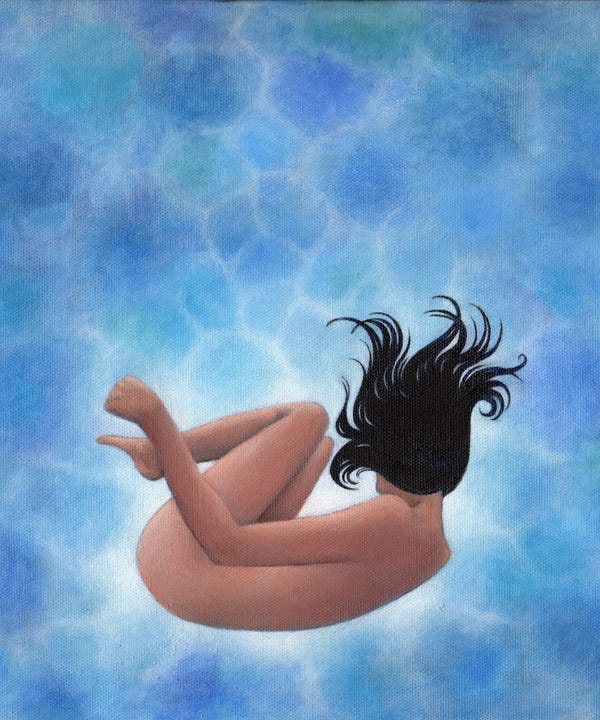 Mariam Paré always knew she'd spend her life making art. One single day, however, changed how she would execute her passion — at 20 years old, Paré sustained a gunshot wound to her spinal cord that left her paralyzed. While she still had some control over her upper body, she didn't believe she'd be able to recover the motor skills in her hands to paint as well as she had before her injury. Like any true artist, she came to a creative solution: "A therapist had taught me to write my name with a pen [in my mouth]," Paré tells us. "And immediately, I thought, I can paint this way. If I can write my name this way, I can paint this way."
Mariam Paré always knew she'd spend her life making art. One single day, however, changed how she would execute her passion — at 20 years old, Paré sustained a gunshot wound to her spinal cord that left her paralyzed. While she still had some control over her upper body, she didn't believe she'd be able to recover the motor skills in her hands to paint as well as she had before her injury. Like any true artist, she came to a creative solution: "A therapist had taught me to write my name with a pen [in my mouth]," Paré tells us. "And immediately, I thought, I can paint this way. If I can write my name this way, I can paint this way."Of course, it didn't come easily, and it took her some time to hone this technique. "It was terrible! I was really, really bad at it, but it was better than trying to use my hands," Paré says. Her passion for painting drove her recovery, and in the past decade she has risen to prominence, as both an artist and an advocate for people living with disabilities. She hopes to continue to express this part of her identity in her art, so that others may feel comfortable to do so, too.
In describing an upcoming project, she mentions her excitement around its larger purpose: "It’s a way of humanizing disability culture, or subtly injecting disability culture into mainstream imagery, in a way that makes it kind of digestible to the public." It's with equal parts talent and tenacity that Paré has made artists with disabilities far more visible.
Click ahead for a selection of Paré's work, and for her thoughts on the therapeutic power of art.
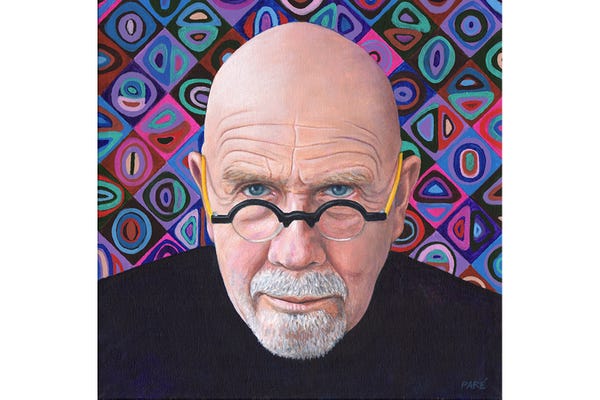
"I started painting with my mouth in 1996, right after my injury, and I didn’t get into the MFPA (Mouth and Foot Painting Artists association) until 2006…. It had really taken me that long to hone my skill as a mouth painter, and to get to the level where I was even good enough to get into the association. They’re an association of professional artists. They’re not just like, 'Oh, you’re disabled! You can be an artist in our association.'"
Chuck Close
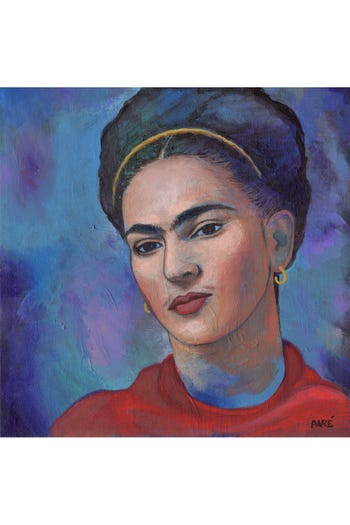
"I probably couldn’t have been involved with them sooner, because it had taken that long to develop myself and get to be a good painter again."
Frida
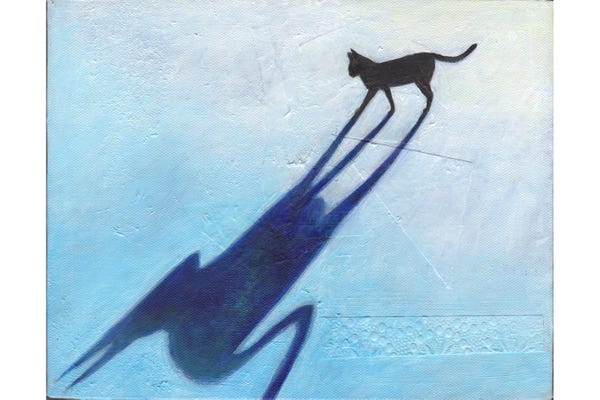
Following her injury, Paré says that art "became more of my purpose. It was the one thing I think I could do good…. [After] having a life-changing injury where you feel like you’ve lost everything else, [and still] having the one thing that you feel like you could succeed at — you kind of embrace that as closely as you can."
Shadow Play
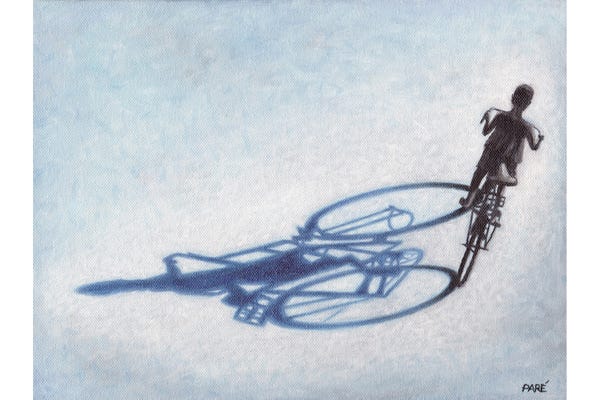
"My inspiration became telling my story, expressing myself even more. It was almost cathartic. It helped me cope with my injury. I think that most artists are like that. I don’t know if, had I not been disabled, I would be the same way — painting to cope. It became even more important after having a disability."
Reverie
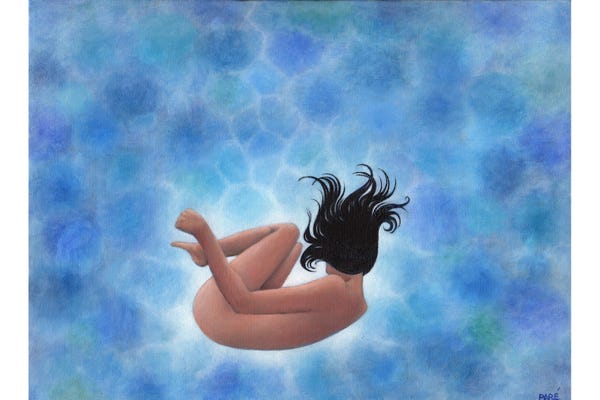
"I’ve always had a deeply bedded compulsion to create pretty things or paintings. I think it stems from something emotional. I’m an emotional person, and I always want to affect people or express myself, so I think that’s why I’ve been doing it for so long…. I still get very excited to say I’ve been painting for almost 25 years now, and I’m still excited about what more I can make and what more I can do. I’ll probably be doing it until I’m old."
Float Blue
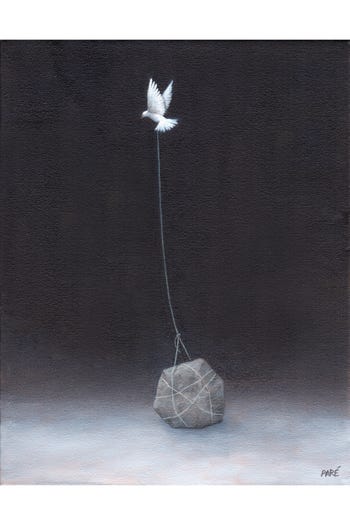
"I did a series called Heavy…[of] five images that came to mind that embodied what paralysis is like for me. The bird is the spirit, it’s a person’s will. A human being’s soul is like a bird.
"You’re still yourself, you’re still a bird, but paralysis is like being a bird tied to a rock. You have that one physical constraint, but your will and your spirit is still there, as long as you don’t let that rock drag you down. You might not be able to fly as far, but you’re still a bird."
Toil
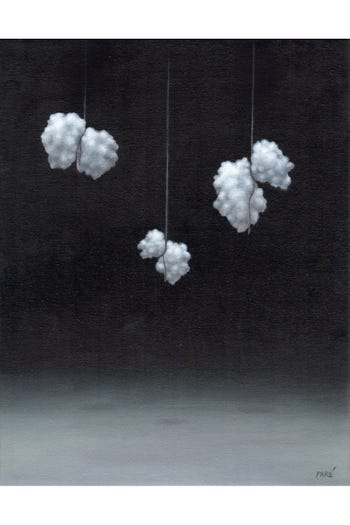
"I’ve exhibited those paintings and it’s amazing what different interpretations people will come up with. It’s not just about paralysis. People will see that [image] and identify it with their own challenges in many ways…. It was a very special series for me because I have not made a lot of work that has been about my paralysis or my disability or the fact that I’ve been a gunshot victim."
Heavy
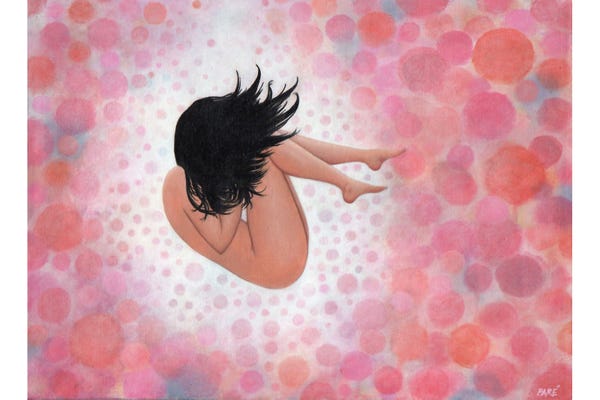
"[In] the last couple years, I’ve felt like I’m at that point where I can make art about those subjects. Ever since I started making art about those subjects, it’s been very powerful for me, and I feel like that might be something I can really talk about with my art."
Float Pink
Watch Paré's technique and process for yourself.
Like what you see? How about some more R29 goodness, right here?
The Haircut That Changed This Trichotillomania Sufferer's Life
Naya Rivera Shares Her Candid Thoughts On Breast-Feeding
What Happens If You're Still Drunk When You Go To Bed?













